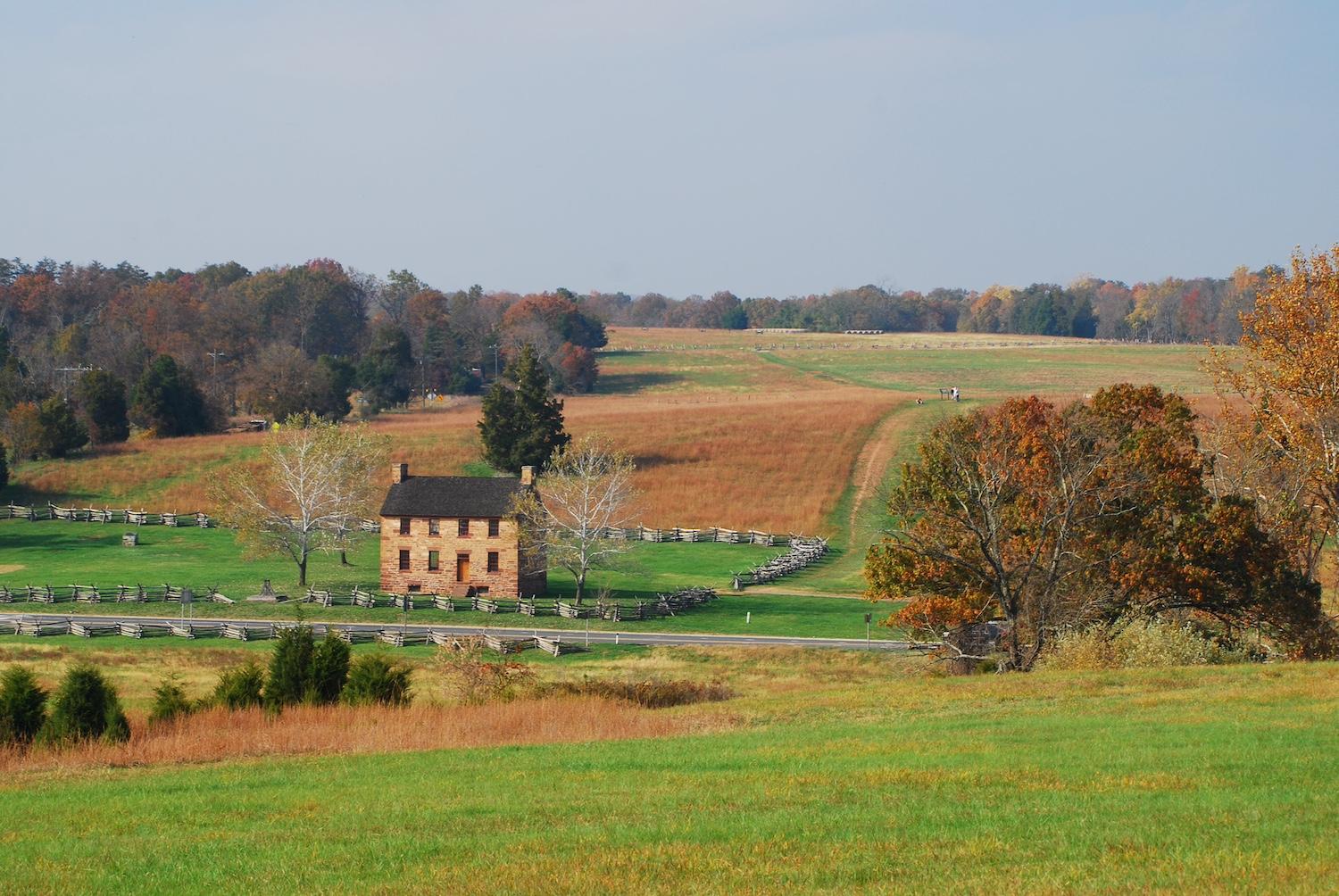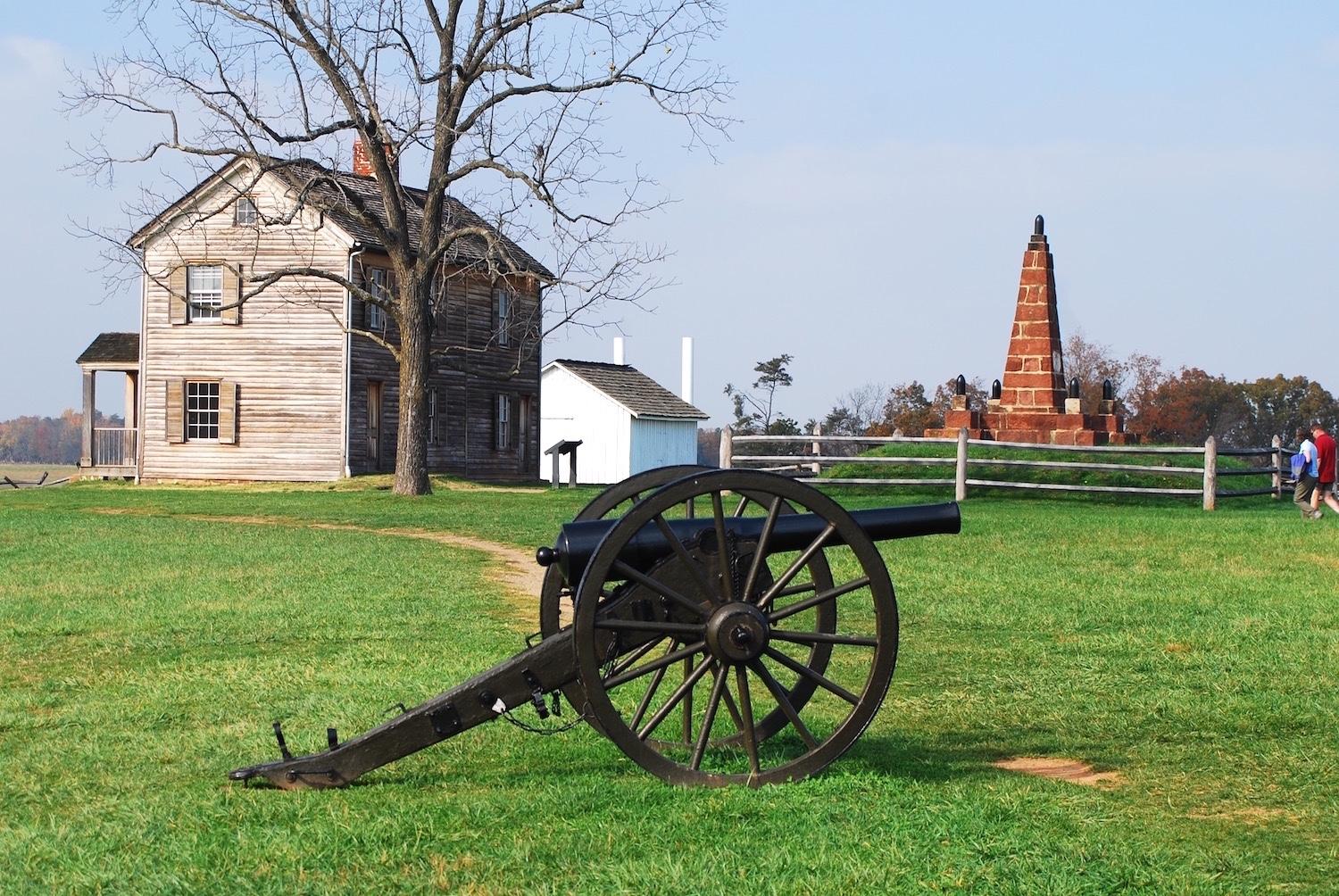
Local advocacy groups are working to stop a data processing center from being built next to Mansassas National Battlefield Park/Kurt Repanshek file
Foot Soldiers In The Digital Gateway Fight
Local advocacy groups partner up to protect Manassas National Battlefield Park and the region in which it sits.
By Kim O'Connell
When Elena Schlossberg and her husband bought 10 acres of land near the Bull Run Mountains of Virginia in 2000, her original plan was not to become an activist. The couple looked forward to clearing brush, building their dream house, raising a family, and just generally putting down roots.
Nearly a quarter century later, however, Schlossberg has become one of the most dogged and outspoken activists working to protect Manassas National Battlefield Park from a series of threats. Most recently, the threat comes in the form of the Digital Gateway project, a proposed data center whose footprint is estimated to be about 22 million square feet on more than 2,000 acres adjacent to the battlefield. Opponents say the data center would irrevocably change the character, ecology, and views of this nationally significant site, and possibly intrude on unknown burials.
In January, a group of local citizens, along with the American Battlefield Trust, filed a lawsuit to prevent construction of the data center complex, citing several legal zoning violations allegedly committed by the Prince William County Board of Supervisors in its approval of the project in December 2023. With supporters citing potential tax revenue and other purported benefits of the project, the board’s 4-3 vote came after a 27-hour public hearing in which the project faced “overwhelming local opposition [and] objections from the National Park Service,” according to the American Battlefield Trust.
Ten years ago, Schlossberg founded the Coalition to Protect Prince William County, a private advocacy group for which she serves as the executive director, to fight a proposed transmission line that would have compromised the battlefield as well as a historically Black neighborhood founded by descendants of former enslaved people. After a protracted legal battle and extensive outreach by the coalition and others, the utility, Dominion Energy, agreed to bury a key portion of the route.
“In 2015, the social media landscape was very limited,” Schlossberg says. “So, our work was distributing flyers and reaching out to HOAs, just good old-fashioned grassroots advocacy.”
Despite having fewer staff and resources, local groups are often key players in major preservation campaigns that focus on national parks. In the case of Schlossberg’s group, they leveraged or made connections with homeowners, legislators, and others to build a broad-based constituency that proved effective ten years ago. They are now turning to this same constituency to fight the Digital Gateway effort.

The battles at Manassas during the Civil War sprawled across farmlands/Kurt Repanshek file of the Henry House
Encroaching Development
During the Civil War, the first and second battles of Manassas were fought over land that was largely open fields dotted with trees and farmsteads. Roads were laid with dirt and gravel, and it would have taken travelers the better part of a day to travel on horseback from downtown Washington, D.C., to the battlefield.
Today, the battlefield sits only a mile north of Interstate 66, a major thoroughfare in and out of the nation’s capital. In the more than 30 years since preservationists successfully fought off a plan to build a Disney theme park within view of the battlefield, Manassas has been at the center of an ever-tightening chokehold of development. The surrounding Prince William County has more than doubled its population to just under 500,000 people in three decades, making it the second-most populated county in Virginia after Fairfax.
“Western Prince William has survived the overdevelopment of the northern Virginia landscape,” Schlossberg says. “It has been this protected secret jewel almost. [But the threats] just keep getting worse and worse, and now it’s an industrial corridor. How do we teach the past, present, and future if we destroy this landscape with data center infrastructure?”
These issues are not new for Schlossberg, who says her advocacy is rooted in the Dr. Seuss book The Lorax. The Lorax is a creature who “speaks for the trees,” while consumerists all scramble to acquire a “Thneed,” a symbolic object that everyone wants. “When I grew up, there were only five TV channels,” Schlossberg says. “So once a year The Lorax [movie] would come on, and that movie spoke to me. ‘Everybody needs a Thneed,’ except that now it’s something to do with an app or a phone.”
In recent years, the greater D.C. metro area has been an increasingly popular destination for major companies with huge digital footprints. In 2023, the granddaddy of them all—Amazon—opened its HQ2 in Arlington, Virginia, just outside D.C., and a subsidiary, Amazon Web Services, is driving much of the data center development in the region. Millions of square feet of data and distribution centers are planned near the Wilderness Battlefield at Fredericksburg & Spotsylvania National Military Park, just one other example.
As the threat grows, so do the partnerships, Schlossberg says. “What’s been interesting is historically conservation and preservation groups don’t always work very closely together,” she says. “We’ve all joined together in the one common lawsuit. It’s all hands on deck.”
Collaborative Efforts
Joseph Eaves, vice president of the Manassas Battlefield Trust’s board of directors, agrees. The trust is the park’s official nonprofit partner. “What’s been really great with this particular group is most people have a different dynamic or background,” he says. “You have environmental groups, you have this nonprofit associated with the park, then you have homeowner groups. In this case, for the most part it works really well, because we are able to leverage each other’s expertise.”
So far there hasn’t been any movement on the lawsuit, so the trust is focusing its energy on supporting battlefield and park protection bills at the state level.
“There was a range of park protection bills in the state assembly this year,” Eaves says. “Many of them are common sense—[stating that] you should not build a data center five feet away from the park border. There should be a buffer. [These bills] did not make it through the process. It’s concerning that in the past Dominion Energy used to be the biggest lobbyist [in the Virginia state legislature] and now it’s Amazon.”

Twenty-first-century technologies threaten to encroach on 19th century hallowed ground/Kurt Repanshek file
In response to the Digital Gateway project, the trust has also been giving more tours in areas of the battlefield that would be most affected if the project gets built—locations like the Dogan House and the Brawner Farm on the park’s western side. Both properties are examples of how civilians were caught up in larger events not of their own making—in this case, two major Civil War battles in 1861 and 1862. Now, homeowners in the region find themselves in a similar situation in the data center era.
According to Amazon Web Services, the company “carefully chooses [its] data center locations to mitigate environmental risk, such as flooding, extreme weather, and seismic activity” and is “committed to reaching net-zero carbon emissions by 2040, is on a path to power its operations, including AWS data centers, with 100 percent renewable energy by 2025.”
Yet Eaves says that, with cloud technology improving every day, these companies could do more to innovate and create data infrastructure that does not require building mammoth data centers in historically significant and sensitive areas.
“What people don’t realize that so much that exists today, somebody saved,” Schlossberg says. “If you’re looking at green space [in northern Virginia], you’re looking at something someone helped to protect. That’s how look at western Prince William. I look at it as this jewel that deserves protection.”

Add comment